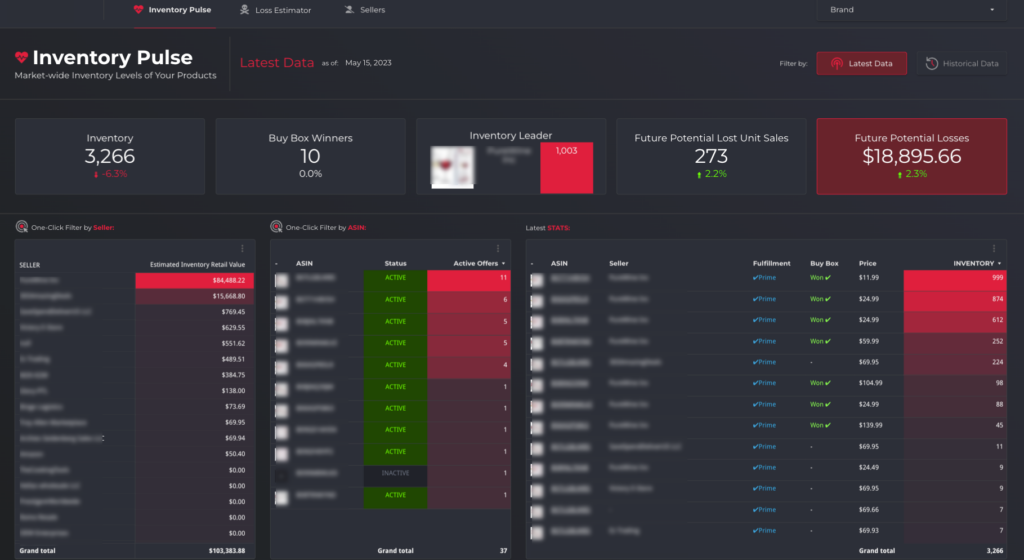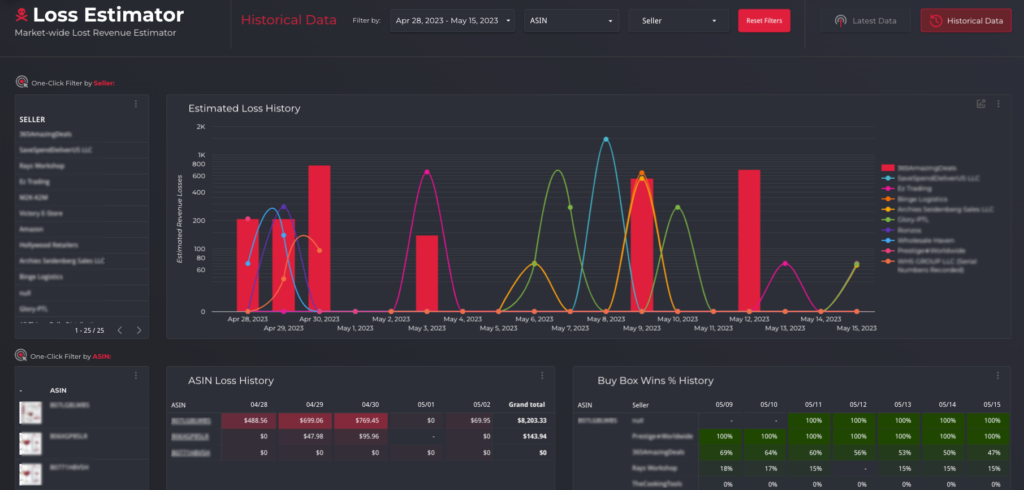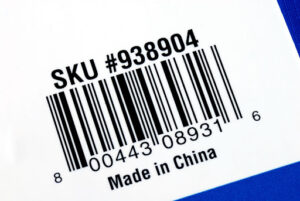Amazon’s vast marketplace has created unprecedented opportunities for brands to reach a global customer base. However, this digital boon is not without its challenges. One of the most pressing issues that brands face today is the problem of unauthorized sellers. These illicit players are selling products without the consent or knowledge of the brand owners, causing a myriad of challenges for legitimate businesses.
When unauthorized sellers infiltrate your Amazon listings, they can cause significant damage to your brand and bottom line. The consequences are multifold. Firstly, these unauthorized sellers often undercut legitimate sellers, leading to price erosion. This not only diminishes profits but can also cheapen the perceived value of your brand in the eyes of consumers.
Secondly, the presence of unauthorized sellers can lead to brand confusion. When multiple sellers are offering your product, customers can be unsure about who they’re actually buying from. This can lead to negative reviews and feedback, not because your product is subpar, but because the customer experience provided by these unauthorized sellers fails to meet expectations.
Lastly, unauthorized sellers can contribute to shrinking profit margins. As they drive down the prices, you might find yourself compelled to match these lower prices, eating into your profitability.
In this article, we explore how to remove unauthorized sellers on Amazon, thus protecting your brand, preventing price erosion, and ensuring your profit margins stay healthy. We’ll delve into the legalities, debunk some common misconceptions, and provide actionable strategies to help you regain control of your brand on Amazon.
Misconceptions About Removing Unauthorized Sellers
Debunking Myths: Can You Legally Remove Unauthorized Sellers from Your Amazon Listings?
When confronted with the issue of unauthorized sellers, many brand owners and managers feel powerless due to a widespread belief that they can’t legally do anything about it. This misconception largely stems from a misunderstanding of the first sale doctrine, which seemingly protects the rights of unauthorized sellers to resell products they’ve lawfully acquired.
The first sale doctrine is a legal principle that allows the owner of a legally purchased copyrighted item to resell or dispose of it as they see fit. In essence, it states that once a product is sold for the first time, the copyright owner loses control over subsequent sales. This has led to the belief that unauthorized sellers are untouchable as long as they acquired the products lawfully.
However, this notion is not entirely accurate. While the first sale doctrine does provide some protection to resellers, there are exceptions and limitations to this rule. In some cases, brand owners can legally remove unauthorized sellers from their Amazon listings if they can prove that these sellers are violating specific conditions. Understanding these exceptions is crucial for brands looking to regain control over their Amazon presence and protect their business from the negative impact of unauthorized sellers.
Understanding the First Sale Doctrine and Its Limitations
Navigating the First Sale Doctrine: How to Legally Stop Unauthorized Sellers
The first sale doctrine, also known as the exhaustion doctrine, originates from copyright law. It holds that once a copyrighted product is sold by the copyright owner or with their permission, the buyer can then resell, rent, or lend that product without the copyright owner’s permission. This is why used bookstores, libraries, and consignment shops can operate without infringing copyright law.
However, this doctrine has been widely misinterpreted in the context of unauthorized sellers on Amazon. Many brand owners and managers believe that it provides an impenetrable shield for unauthorized resellers. In reality, there are workarounds to the first sale doctrine that can help to stop unauthorized sellers.
One key workaround is the concept of “materially different” products. If a brand owner can prove that the product sold by an unauthorized seller is materially different from the genuine product, they may have grounds for legal action. A materially different product could be one that is sold without a warranty, without accompanying customer service, or without other elements that the genuine product would include.
Another crucial workaround revolves around quality control requirements. If a brand owner can demonstrate that unauthorized sellers are not meeting the quality control requirements outlined on their website or in their distribution agreements, they may have a valid claim against these sellers. This could include sellers who are storing products improperly, leading to damage or deterioration, or sellers who are failing to provide the level of customer service that the brand expects for its customers.
Understanding these limitations to the first sale doctrine is key to developing effective strategies to remove unauthorized sellers on Amazon. By leveraging these legal workarounds, you can protect your brand, control your pricing, and maintain the integrity of your product offerings on Amazon.

Case Law Protecting Brands: Materially Different Products and Quality Control Requirements
Winning the Legal Battle: How Case Law Supports Brands in Removing Unauthorized Sellers
There have been several legal precedents where brands have successfully used the “materially different” and “quality control” arguments to protect their interests against unauthorized sellers. These cases underscore the fact that brand owners and managers are not powerless and that they can take legal action to protect their brand.
One landmark case is the Davidoff vs. CVS case. Davidoff, a manufacturer of luxury perfumes, successfully sued CVS for selling materially different products. The products in question were perfumes that had unique batch codes removed by CVS, which Davidoff argued made the products materially different because it impeded their ability to identify counterfeit products and track products for recalls. The courts agreed with Davidoff, demonstrating that subtle differences can indeed be deemed as “materially different.”
Similarly, in the case of Beltronics USA vs. Midwest Inventory Distribution, Beltronics, a radar detector manufacturer, argued that their products sold without a direct warranty, customer support, and software updates were materially different from those sold by authorized dealers. The court ruled in favor of Beltronics, stating that the absence of these services constituted a material difference.
The quality control argument has also been successfully leveraged in courts. For instance, in the Australian Gold vs. Hatfield case, the court ruled in favor of the brand owner, Australian Gold, who argued that unauthorized sellers could not guarantee the same storage and handling conditions, potentially affecting product quality and customer satisfaction.
These cases illustrate that the first sale doctrine does not grant complete immunity to unauthorized sellers. Legal avenues are available to brand owners and managers to protect their brand integrity, control pricing, and maintain customer satisfaction. By understanding and utilizing these legal precedents, you can effectively stop unauthorized sellers from damaging your brand on Amazon.
Effective Strategies to Remove Unauthorized Sellers on Amazon
Removing unauthorized sellers from your Amazon listings can be a challenging task, but it’s not impossible. Armed with a solid understanding of the legal landscape, you can implement several strategies to protect your brand and profits.
Regular Monitoring of Listings
The first step in combating unauthorized sellers is to regularly monitor your Amazon listings. Check your product pages frequently for new sellers and watch for unexpected price changes, which can be a sign of unauthorized sellers undercutting your prices.
Gather Evidence
If you notice unauthorized sellers, start gathering evidence. Document instances where the product offered is ‘materially different’ or where the seller may not be meeting the quality control requirements outlined on your website or in your distribution agreements. This could involve purchasing the product yourself to confirm discrepancies or screenshotting seller profiles and customer reviews that indicate subpar service or product quality.
Reporting to Amazon
Once you’ve gathered sufficient evidence, report the unauthorized sellers to Amazon. Amazon’s policy is to ensure that sellers have the right to sell the products they list, and they have a process in place for reporting potential violations. Be sure to follow their guidelines carefully when submitting your report to increase the chances of a successful resolution.
Leverage Expert Insights
The task of removing unauthorized sellers can be daunting, especially when you’re trying to run a business at the same time. Fortunately, you don’t have to do it alone. There are resources and services available that can help. For example, AMZ Watchdog offers valuable insights on protecting your brand online, and provides a service that helps brands enforce their policies and remove unauthorized sellers.
By following these strategies and leveraging the resources available, you can regain control over your Amazon listings, protect your brand’s integrity, and preserve your profit margins. Remember, the fight against unauthorized sellers
Leveraging Technology and Expertise to Fight Unauthorized Sellers
Enhancing Your Arsenal: How AMZ Watchdog Can Help in the Fight Against Unauthorized Sellers
While manual monitoring and reporting can be effective, it’s time-consuming and requires a good understanding of legal nuances and Amazon’s policies. This is where leveraging technology and expertise can be a game-changer. Services like AMZ Watchdog are designed specifically to help brand owners and managers combat unauthorized sellers on Amazon.
AMZ Watchdog uses sophisticated technology to monitor your Amazon listings around the clock. The service not only identifies unauthorized sellers but also provides detailed evidence of policy violations. This includes documenting ‘materially different’ products and instances of inadequate quality control, which can be used to strengthen your case when reporting to Amazon or taking legal action.
But the benefits of using a service like AMZ Watchdog extend beyond monitoring and evidence collection. AMZ Watchdog’s team of experts understands the complexities of the Amazon marketplace, the first sale doctrine, and the legal workarounds available to brand owners. They can guide you through the process of reporting unauthorized sellers, ensuring that you follow Amazon’s guidelines correctly and improve your chances of a successful resolution.
Using expert help can save significant time and resources, freeing you up to focus on growing your business. It also provides peace of mind, knowing that you have a team of experts and a powerful technology platform on your side, constantly watching over your Amazon listings and ready to act at the first sign of unauthorized selling activity.
By choosing to leverage expert help and technology, you can wage a more effective fight against unauthorized sellers, protect your brand, and maintain your profitability on Amazon.
Protecting Your Brand and Maintaining Control on Amazon
Prevention and Vigilance: Key Strategies to Maintain Control of Your Brand on Amazon
While dealing with unauthorized sellers is critical, it’s equally important to take preventative measures to avoid the problem in the first place. Implementing robust strategies can significantly reduce the risk of unauthorized sellers infiltrating your Amazon listings.
Update Distribution Agreements
One of the first steps in prevention is to ensure that your distribution agreements are up to date and explicitly state your reselling policies. Your agreements should include clauses that prevent distributors from selling your products to unauthorized resellers. It’s advisable to work with a legal professional to ensure that your agreements are comprehensive and enforceable.
Enforce MAP Policies
Maintaining a Minimum Advertised Price (MAP) policy can help control price erosion caused by unauthorized sellers. A MAP policy stipulates the lowest price at which your products can be advertised, protecting your brand’s perceived value and preserving your profit margins. Be sure to communicate your MAP policy clearly to all authorized distributors and take action against those who violate it.
Continuous Monitoring and Swift Action
Even with preventative measures in place, continuous monitoring remains crucial. Stay vigilant, watch out for signs of unauthorized selling activity, and take swift action when it’s detected. The quicker you respond, the less damage unauthorized sellers can do to your brand and profits.
Maintaining control over your brand on Amazon requires a combination of proactive strategies, continuous monitoring, and swift action when unauthorized sellers are detected. With the right measures in place, you can protect your brand, maintain your profit margins, and ensure a positive experience for your customers on Amazon.
Take Back Control: Your Guide to Removing Unauthorized Sellers on Amazon
In this increasingly digital age, maintaining control over your brand on Amazon is crucial for your business’s growth and profitability. Unauthorized sellers can erode your brand value, undercut your pricing, and confuse your customers. But with the right strategies and understanding of legal workarounds, you can effectively remove unauthorized sellers from your Amazon listings.
The first sale doctrine is often misinterpreted as a protective shield for unauthorized resellers. However, with the understanding that exceptions like “materially different” products and failure to meet quality control requirements can provide legal grounds for removal, brand owners and managers are not as powerless as they might think.
Case law has demonstrated successful precedents where brands have used these exceptions to their advantage. By proving that unauthorized sellers offer “materially different” products or fail to meet quality control standards, brand owners can regain control over their Amazon listings.
Effective strategies to combat unauthorized sellers include regular monitoring of listings, gathering evidence, reporting to Amazon, and leveraging expert services like AMZ Watchdog. These services save time and provide a comprehensive solution to the unauthorized seller problem, allowing brand owners and managers to focus on their core business operations.
Preventative measures, such as updating distribution agreements and enforcing MAP policies, are also key to maintaining control over your brand on Amazon. Continuous vigilance and swift action when unauthorized selling activity is detected remain crucial in this battle.
While the challenge of unauthorized sellers on Amazon is significant, it is not insurmountable. With the right knowledge, strategies, and resources, you can effectively protect your brand, maintain control over your listings, and ensure a positive experience for your customers. By taking these steps, you can successfully remove unauthorized sellers on Amazon, preserve your brand’s integrity, and secure your business’s future in the competitive Amazon marketplace.
For more information or help with your specific situation regarding unauthorized sellers on Amazon, don’t hesitate to contact us at AMZ Watchdog. Our team of experts is ready to assist you in the battle against unauthorized sellers.




